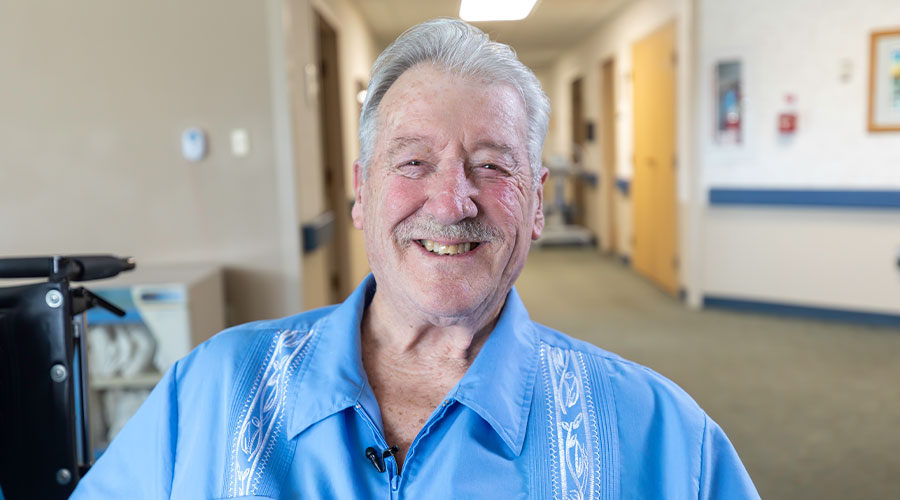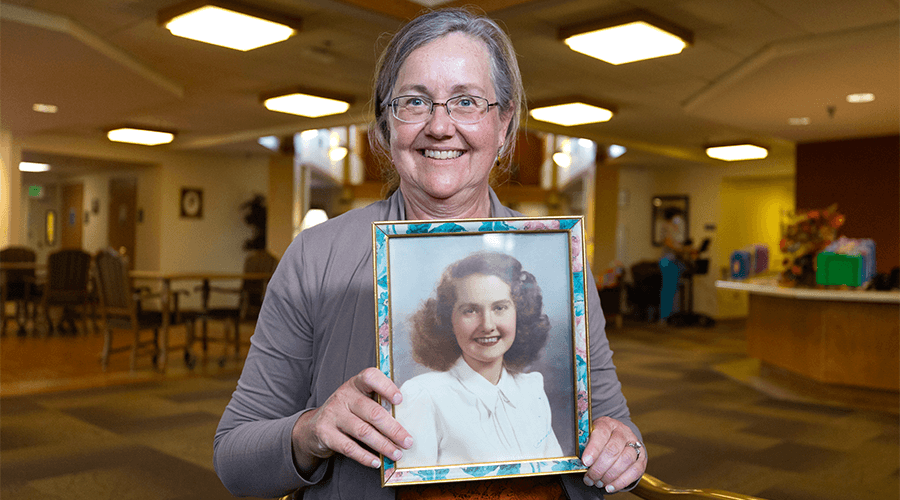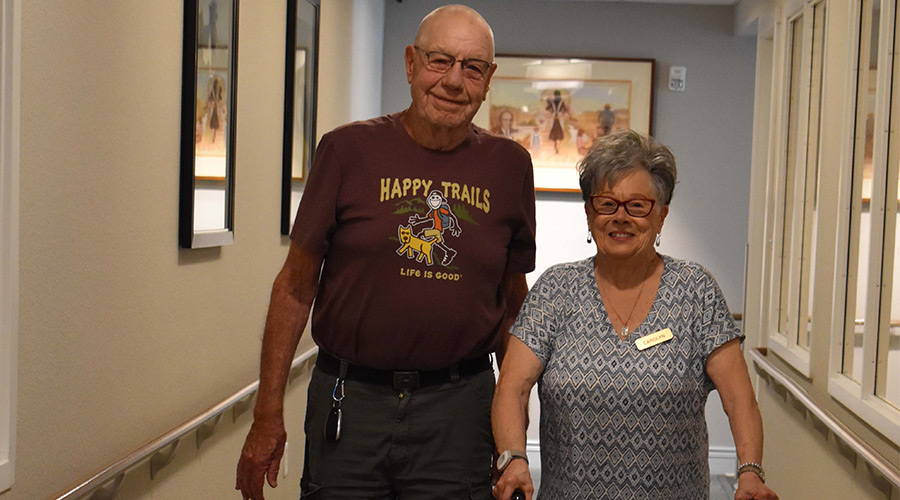Jim Erickson belongs to a unique category of caregivers.
As a father of two children and a caregiver to his 84-year-old mom, Diane, Jim is what's called a sandwich generation caregiver.
Watch an animated infographic about sandwich generation caregivers.
By definition, Jim and others in his position are either raising a child or financially supporting a grown child while caring for a parent 65 and older.
Many sandwich generation caregivers feel overwhelmed juggling the responsibilities of their dual caregiving role.
The Good Samaritan Society works with caregivers in a variety of ways, and even though the circumstances vary, most caregivers in this situation say the same thing: getting extra help is crucial.
Read Jim’s story below to find reassurance in seeking help, support and advice as a caregiver for a loved one.
Life changes prompt need for assistance
Signs your parent needs help at home
Ignoring problems now could lead to bigger issues as your parents age. Read more.
Jim and his siblings were used to helping their mom, Diane, and stepdad, Darwin, with tasks around the house, picking up their groceries, and driving them to appointments. Diane suffered from heart disease and diabetes, among other health concerns.
Diane’s health dramatically declined in 2017. “Everything got turned upside down for my mom,” says Jim.
She was hospitalized with severe diabetic issues, when her husband, who was also her primary caregiver, died from a heart attack. She knew that life would never return to normal.
Rehabilitation therapy provides needed stability
Jim and his siblings were relieved and excited to hear that Diane would be transferred from Sanford Health to Good Samaritan Society – Luther Manor to help her develop a healthy diet and habits for managing diabetes.
The 30 days she spent in rehabilitation therapy became the tipping point in the midst of the chaos. Before, while living at home, Diane didn’t heed her family’s efforts to help her manage her health issues.
“The tough thing was, with her habits and behaviors, she didn’t like to be told what to do,” says Jim. “We felt like we were preaching to her constantly.”
After two weeks, staff at Luther Manor taught Diane how to manage her diet and medications and helped her regain strength and mobility.
"The turnaround was miraculous. My mom’s strength, soul and spirit returned.”– Jim Erickson
Assisted living balances help with independence
Through her rehabilitation stay, Diane found hope. Stability returned to her life.
She then moved into an assisted living center in Jasper, Minnesota, where she’s found a renewed sense of purpose without giving up her independence.
She makes her own lunch on occasion, listens to books on tape, attends chapel services every Sunday and has a friendly greeting for everyone in her apartment building.
"She’s more independent than I thought she would ever be," says Jim. "I thought she’d be in a skilled nursing home [at this stage in her life]."
Jim’s family still takes her to doctor appointments and picks up her groceries, and Jim manages her finances.
As a sandwich generation caregiver, Jim balances his mom’s needs with his own family's. His advice to other caregivers is to not let your aging parent wait long before seeking treatment for their health problems. If they get swept under the rug, “then it’s really hard to deal with.”
Diane has now lived in her assisted living apartment for over two years. Jim says her positive spirit continues to lift up those around her.
"That’s been the greatest joy to observe, now that she’s feeling better.” – Jim Erickson
Source: aarp.org



